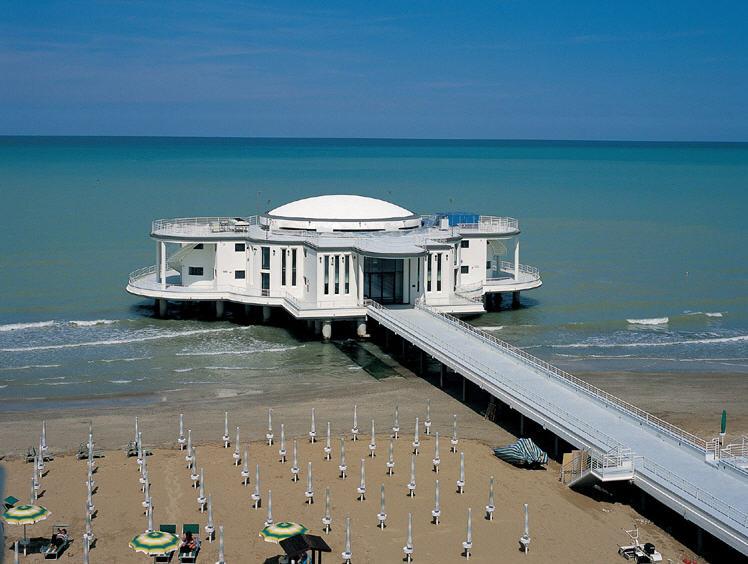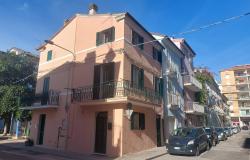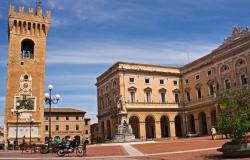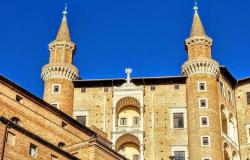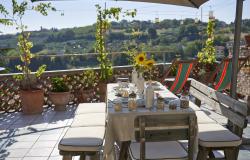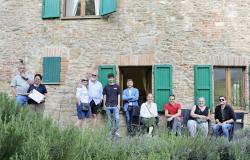Arriving in Senigallia in mid-August last year, I was greeted by an Italian coastal town that appeared to be in the throes of summer. Having just hosted its annual Summer Jamboree, paying homage to 1950s Americana— complete with live Rock ‘n’ Roll music and a motorcade of Cadillacs— the walls along Corso 2 Giugno were still adorned with sepia-tinged flyers carrying a picture of the year’s special guest, Chuck Berry.
On that first day, I headed towards the station, joining the legions of culture vultures and shutterbugs taking snaps of the town’s Renaissance-era castle, La Rocca Roveresca. Continuing through the station’s underpass, I found myself along its sprawling seafront.
Compared to the likes of Rimini, where tourists flock until well into September, Senigallia’s high- season is relatively short. Despite the velvet sands of the Spiaggia di Velluto being punctuated by hundreds of bronzed bodies—including tourists from across the whole of Europe—and the bustling main strip of Lungomare Alighieri with its numerous cafes, bars and maritime restaurants, I was actually witnessing the end of the summer.
 Sure enough, two weeks later, returning from a brief stay in Rome, I walked to my seaside apartment to find the beaches nearly desolate, barring the residual smattering of locals fly fishing and others strolling by La Rotonda. Despite the weather still being fine—for a Brit, that is—I was shocked at how a town, upon first impressions, could change so drastically.
Sure enough, two weeks later, returning from a brief stay in Rome, I walked to my seaside apartment to find the beaches nearly desolate, barring the residual smattering of locals fly fishing and others strolling by La Rotonda. Despite the weather still being fine—for a Brit, that is—I was shocked at how a town, upon first impressions, could change so drastically.
Naturally, it’s the same for all seaside towns where tourism and its turnover are predominantly determined by sunshine and blue skies. Tellingly, remarking upon the exodus in the office the next day, I was met unanimously by the same reply: “Ah, Ross, you should have been here at the beginning of August!”
Despite living in a town of undoubted rustic splendour, a few of its denizens seemed genuinely wistful at the thought of having to wait another nine months for the return of summer.
It’s fascinating to witness an Italian seaside town like Senigallia during the intervening months. At the beginning of September, just as children return to school, many of the beach hut owners, who work during the summer months, recommence their winter jobs. I asked Franco, who worked for our company, how it felt to return to his main job: “I am already waiting for next summer,” he answered drily.
The seafront soon resembles a ghost town as temperatures begin to dwindle. Bars and hotels are boarded up, basketball courts are packed away whilst a strata of folded up deck chairs lean alongside each uninhabited beach hut. It also soon became apparent that I was the only resident in the entire apartment block.
However, an Italian seaside town never truly hibernates. Even in December, my boss, a member of the town council, began to attend meetings at the town hall in central Piazza Roma to discuss possible tourism campaigns for the following summer. Not long after, turning onto Lungomare Alighieri on my way home one evening, I heard a babel of accents coming from the terrace of a hotel. I looked up to see a number of waiters and waitresses engaged in fervent conversation, already training for the high-season.
Whilst I didn’t get to spend much of my summer in Senigallia, I take consolation in that I at least got to witness the town prepare for it!
